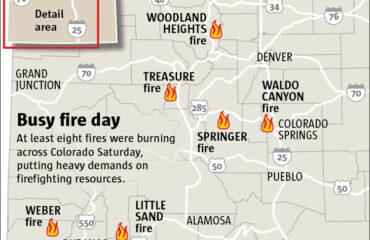
 Congress has given itself two more months to come up with long-term solutions for the debt-burdened federal program that provides insurance for homes and businesses in areas subject to flooding.
Congress has given itself two more months to come up with long-term solutions for the debt-burdened federal program that provides insurance for homes and businesses in areas subject to flooding.
A voice vote in the House Wednesday extended the life of the National Flood Insurance Program for 60 days, assuring that people in flood-risk areas will continue to have access to the flood insurance they need to close on mortgages or obtain refinancing. The program is slated to expire Thursday.
The last full-scale re-authorization of the NFIP, a wing of the Federal Emergency Management Agency, occurred in 2004. Since 2008 the insurance provider has stayed alive through a series of 16 short-term extensions while lawmakers debate how to restore its fiscal soundness.
The NFIP was largely self-financing until it was overwhelmed by claims from hurricanes Katrina and Rita in 2005. It now owes nearly $18 billion to the Treasury.
Rep. Judy Biggert, R-Ill., chair of the House Financial Services subcommittee on insurance, said she hoped Wednesday’s 17th stopgap measure would be the last, “because this program is too important to let lapse, and too in-debt to continue without reform.”
She said Senate leaders had given public and private assurances that they would vote on a long-term extension in June.
The House last year passed a five-year extension that allowed for increased premiums and ended some subsidies, but the Senate has been unable to get a companion bill to the floor for a vote.
The Senate last week passed the 60-day extension after adding a provision by Sen. Tom Coburn, R-Okla., that would gradually eliminate premium rate subsidies for people buying second homes and vacation homes in flood-prone areas. Coburn said that could save the program $2.7 billion over 10 years.
The NFIP was created in 1969, partly to fill the gap left by the unwillingness of private insurers to provide flood insurance. It now covers some 5.6 million policyholders in 21,000 flood-prone communities




